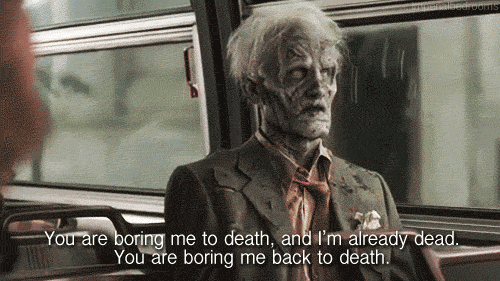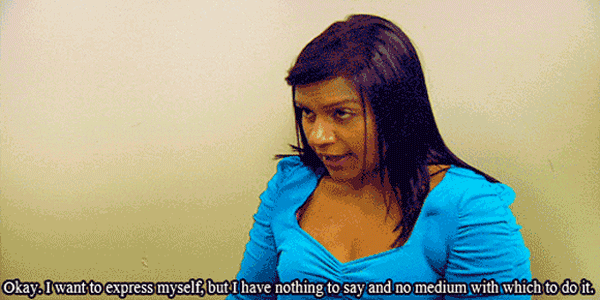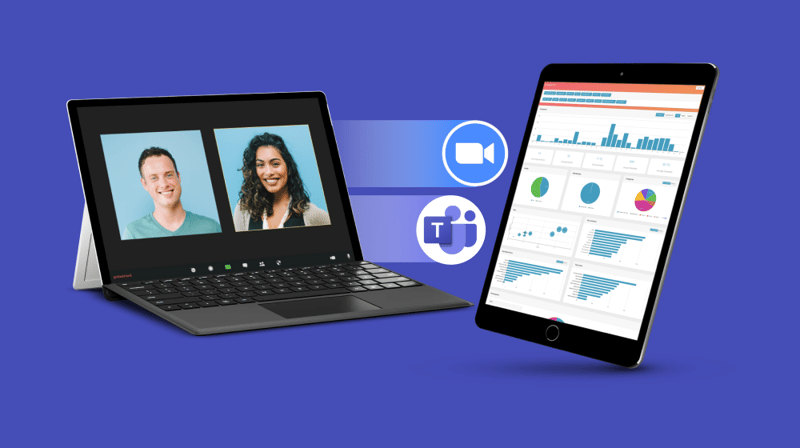In the world of education, being able to effectively present information to an audience is a critical skill.
Yet, whether you are a new professional or a seasoned administrator, it is easy to become complacent. We’ve all sat through a presentation of slide after slide of block text, with information delivered to us in a way that neither inspired nor engaged us. And when it comes our turn to present, although we remember the less than stimulating presentations we have sat through before, we often default to relatively cookie-cutter presentations because we are busy or overwhelmed. And thus, the cycle continues.

Content is one thing, but delivery is another — and the latter is where presentations can fall flat. This can be a problem, as 70% of workers agree that presentation skills are critical to their success at work, according to a survey conducted by Prezi. Compare that with the fact that many people would rather pretend to be sick or risk losing respect in the workplace by asking a colleague to present instead, or literally die than have to do public speaking, and we end up at an unfortunate crossroad.

For the purpose of this article, I’m going to assume that you are an awesome professional who knows your stuff when it comes to your subject matter content. And while there are many articles out there that offer public speaking tips, these handful of suggestions come from years of training wellness peer educators and other wellness professionals in presentation skills that help them feel successful while empowering them to make an impact.
Knowing your material is just the start, and it’s everything that follows which determines if your hard work pays off. These tips to becoming a better presenter will get you on your way.
1. Know your space
Ask in advance about the room layout and don’t be afraid to make requests regarding set-up if needed. If you like the freedom to walk the room as you present, ask to have chairs set up in a way that allows you to walk around the perimeter of the audience, and into two sections, so you can walk in the middle of the crowd. If you prefer a stage, ask for that. Don’t simply arrive and expect your host to know what would be the most effective setup for your program.
Share your technical needs in advance, and have as much of that equipment with you if you can. Coordinate your early arrival to set-up and how long you want to stay afterwards to answer audience questions. Ask if there is a clock in the room, and where it is located, or bring a timepiece with you.
Consider that some may arrive to your program late, and some may leave early, so take this into account when making requests regarding room set-up, as the less disruption these entrances and exits can be, the better.
2. Know your audience
Just because they are attending your presentation, doesn’t mean they care about the topic as much as you do. This can be both a relief and a nuisance.
We want to believe that anyone attending our presentation is as passionate about the subject as we are, but that’s not always the case. They may be there because they have to be, or because it was the best sounding presentation of their options for the afternoon, or because there are free snacks. Some are there because they are curious, interested, and want to learn — and these are your people. Other attendees are sure you are a nice person, but really hope you won’t keep them past the 50 minutes allotted for the program.
Understand that the interest levels and motivations for attending your program can vary widely, and get comfortable with that. In other words, meet your audience members where they are. If you are familiar with the Stages of Change Model, those concepts apply here — some in your audience are in pre-contemplation while others are in maintenance.
Other good ways to know your audience include the following considerations: What will be the gender breakdown of your audience? Is it a mix of faculty and staff, or just faculty? Will it be an audience of students, and if so, what kind of students? Fraternity & Sorority Life, athletes, peer educators, etc.? If it’s an organization, what are their values and language, and how will that inform your approach? Did anything happen recently in their community to prompt their request of your presentation? Is this a mandatory program for this group?
Taking the time to learn about your audience in advance will help you tailor your message and feel connected to them before you arrive.
3. Key phrases and concepts
Knowing your field, your audience, and your content, you will likely discover some key phrases and concepts that will become a part of how you talk about your subject matter.
For example, when talking with students about alcohol, a key phrase I always intentionally say is, “If you choose to drink,. . .” This reinforces that alcohol use is a choice, and not all students are making this choice. A key concept for me is, “We all know it’s good for us to X, but we don’t. What keeps us from doing that?”
Especially with wellness, this enables us to get to an interesting and real discussion that offers practical information that attendees can actually use. In other words, simply saying “Get 8 hours of sleep” is not nearly as effective as saying, “We know we’re supposed to get 8 hours of sleep each night, but we don’t always hit the mark. What keeps us from doing that?” The latter is where you will get engagement, discussion, and real talk about something most people in the room are struggling with, and here is where you can make an impact during your presentation.
Other key concepts would be to identify some anchoring open-ended questions you might use with your audience, and to ask yourself “what’s the takeaway?” so that you stay focused. And of course, remember to be mindful with your use of language regarding identity issues, including sexual orientation, gender, cultural backgrounds, socioeconomic status, disability, and more.
4. Which presenters do you like, and why?
When we are our own reference point, it’s easy to get stuck in our heads and not realize that our perspectives are limited.
I often ask peer educators to take a moment and think of a presenter they like. It might be a professor, comedian, high school teacher or coach, pastor, or a talk show host. We discuss what they like about this person’s style, what makes them effective or memorable, what made this person “stick” with them, and then how they can find their own way to emulate the skills of this person they admire. Take Ellen DeGeneres, for example. Someone might really enjoy her sense of humor or relaxed style.
While you will be more successful being the best version of yourself rather than trying to be someone else, finding role models to learn from as you develop your presentation style will only make you better. Be attentive to presenter styles as you attend conferences and workshops. As you sit in the audience, notice what works and what doesn’t. Look for tips and tricks you’d want to try the next time you present.
5. How you present yourself
Do you present yourself in such a way that your audience can connect with you, or are you just a talking head at the front of the room?
This is where we often lose people in our presentations — we have been so focused on developing our content, we forget to attend to how we present ourselves during our session. These tips are quick and easy to implement but make a big difference.
Walk and talk during your presentation, and ensure the room is set up for you to do so. If you are stuck behind a podium or simply stand next to the screen and read off your powerpoint, you lose an opportunity to engage and connect with your audience. Remember that you know your material, so be confident and speak with authority and you will command your audience. It is also important to “pay attention to your face.” For example, I often have to remind myself to smile during presentations, which lightens the energy and relaxes both myself and the audience. Lastly, look like you’re having fun up there. You set the tone, so if you’re comfortable relaxing and enjoying your time in the room, your audience will often join you.
I often tell peer educators that their role is more of a facilitator rather than a fact-dispenser. Facilitating an activity, a discussion, or a debrief after viewing a video are all ways to include your audience in the presentation and for them to feel connected to you as you share your material.
Facilitation will also help you relax and be more present with your audience, as it gives space for reflection and sharing. This higher level skill keeps you from rushing through material as well. Next, be conversational in your approach. I refer to this as “sidewalk conversation” when training peer educators — what are you like when you’re walking with someone down the sidewalk on the way to class? You’re yourself, you’re not overly formal, you share but you also listen, you laugh, you tell stories.
Think of your presentation as time spent with people who wanted to hang out with you and you’ll have an easier time using your people skills to make it a successful program. Similarly, be personable. Share about yourself when it’s appropriate (either personal examples or stories that illustrate your points) and don’t be afraid to show us your sense of humor as well. These small gestures go a long way in connecting with your audience and helping you enjoy the experience.
Remember that you are the one running the show during your presentation, so channel your inner game show host. It is up to a you to set the tone, get your audience engaged in a way that fits with your personality. At the same time, always pay attention to your gut-feeling throughout your presentation. If you feel like you’re losing your audience, you probably are — pivot, adapt as necessary, and keep moving.
6. Crowd control
This one may depend on crowd size or the topic of the presentation.
For example, in the world of wellness peer education, the larger the audience, the more “crowd control” becomes a consideration — energy is spent on delivering the content but also managing the crowd to keep them engaged. Think of sending two students into a room to present a sexual health program to over 40 of their peers — it’s not an easy task. In training these students, I talk about the different types of audiences they need to learn how to manage: The quiet group, the group with one person who wants to answer every question you ask, the giggly group during a sexual health program, or the chatty group during any presentation, plus how to handle sarcastic or inappropriate comments, and more.
Managing your audience is as important as knowing your content. How can you keep your audience on track? What if you try to engage them and don’t get a response? What’s your approach of working with a crowd of 20 compared to a crowd of 100?
Planning ahead for these situations will help you feel confident and make you an effective presenter. Anticipate issues and have a plan, but also be flexible. Remember that pauses and silences are okay and can often be helpful, although they may feel terrifying.
7. Handouts
If your presentation will include handouts for people to take home, consider making these available at the end of your program.
If they’re passed out too early, your audience may end up reading what’s in front of them instead of listening to you. You also run the risk of handouts left behind. Instead, towards the end of your presentation, hold up each item you brought for them, explain what it is, and where they are located in the room so they can grab what they’d like on the way out. Any key information you want to share with your audience can be reiterated in a handout, but should be a focus of your presentation.
During your program is where you have your captive audience, so it is the place for persuasive or important info. Repeat it in the handout so they remember it later, but don’t count on the handout being where it’s sold to them. Generally, handouts focus on main takeaway points, suggested resources, or practical tips your audience can apply after attending your program.
As with most skills, becoming a better presenter is something that happens with practice and learning, but it’s certainly a key to your career success. These tips will help you create a good foundation to become a confident and engaging presenter.
For more inspiration on becoming a better presenter, check out how Cisco approaches this subject, these 4 common mistakes when giving a presentation, and ways your next conference presentation can rise above the predictable and mundane.





